Spring Cleaning
Published March 31, 2022
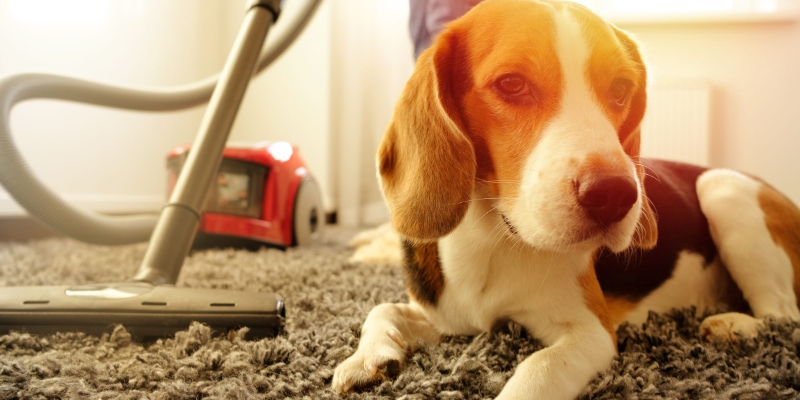

It’s that time of the year to begin deep cleaning and deodorizing your home – and your pet! Learn the safest ways to clean your home, your pet’s things, and new habits to keep messes and odors at bay.
Deodorize Urine in Carpeting
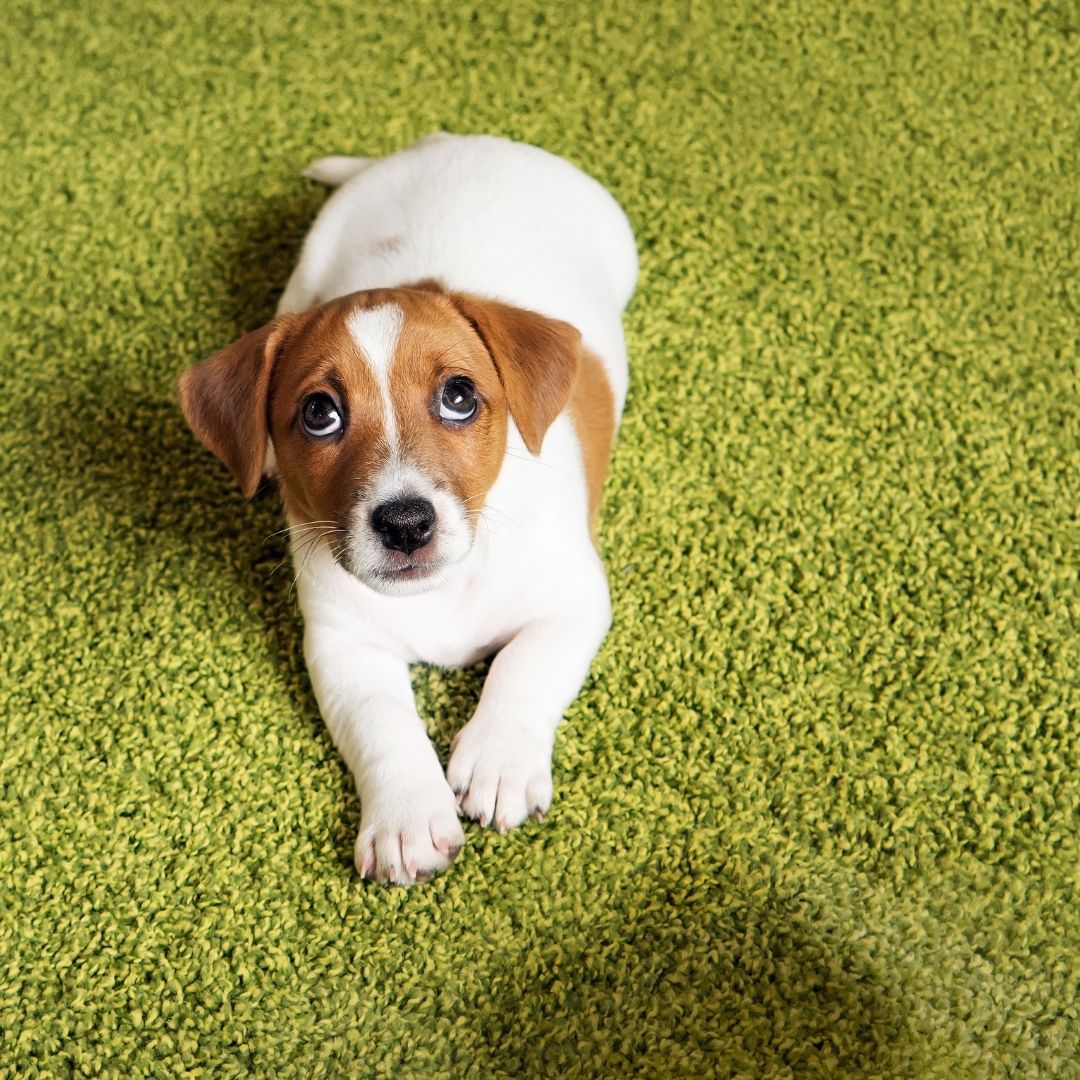

Urinating is a territorial behavior in pets. Even if you don’t notice an odor after cleaning up your pet’s urine, your dog may still smell it and continue marking their territory! Going over the spot with a wet/dry vacuum several times can help lift any remaining urine you couldn’t soak up with paper towels from the carpet’s fibers.
After soaking up the urine as much as possible, you can try several means to neutralize lingering odors. Enzymic cleaners will naturally break down odors, but for a DIY solution, you can also try white vinegar and baking soda.
To use white vinegar and baking soda:
- Mix a 1:1 ratio of vinegar and water.
- Saturate the affected carpeting and let it sit for several minutes. You can either apply with a spray bottle or blot with a dampened rag.
- You can go the extra mile and sprinkle a little baking soda over the wet spot. You’ll see the baking soda react with the vinegar and foam up while they break down the urine. Sop up with a rag dampened in plain water to remove the vinegar and baking soda. Keep your pet away from the damp area until dry.
Essential Tip: Consult a veterinarian if your pet has changed their bathroom habits, as this could indicate illness.
Litterbox Odors & Messes
If you’re battling kitty litter odor and messes, a new cleaning schedule and litterbox setup may help. You should keep at least 2 litter boxes available in a single-cat household. For multi-cat homes, it’s a good idea to keep at least 1 litter box per cat, plus one extra.
Pick the Right Litter Box
- Your cat will be most comfortable in a litter box that is at least twice as long and twice as wide as your cat.
- While it may be tempting to keep your cat’s business out of site with covered litterboxes, they can trap and harbor odors that may deter cats from using them. Good alternatives to trapdoor litterboxes are top-entry litterboxes, as seen below.
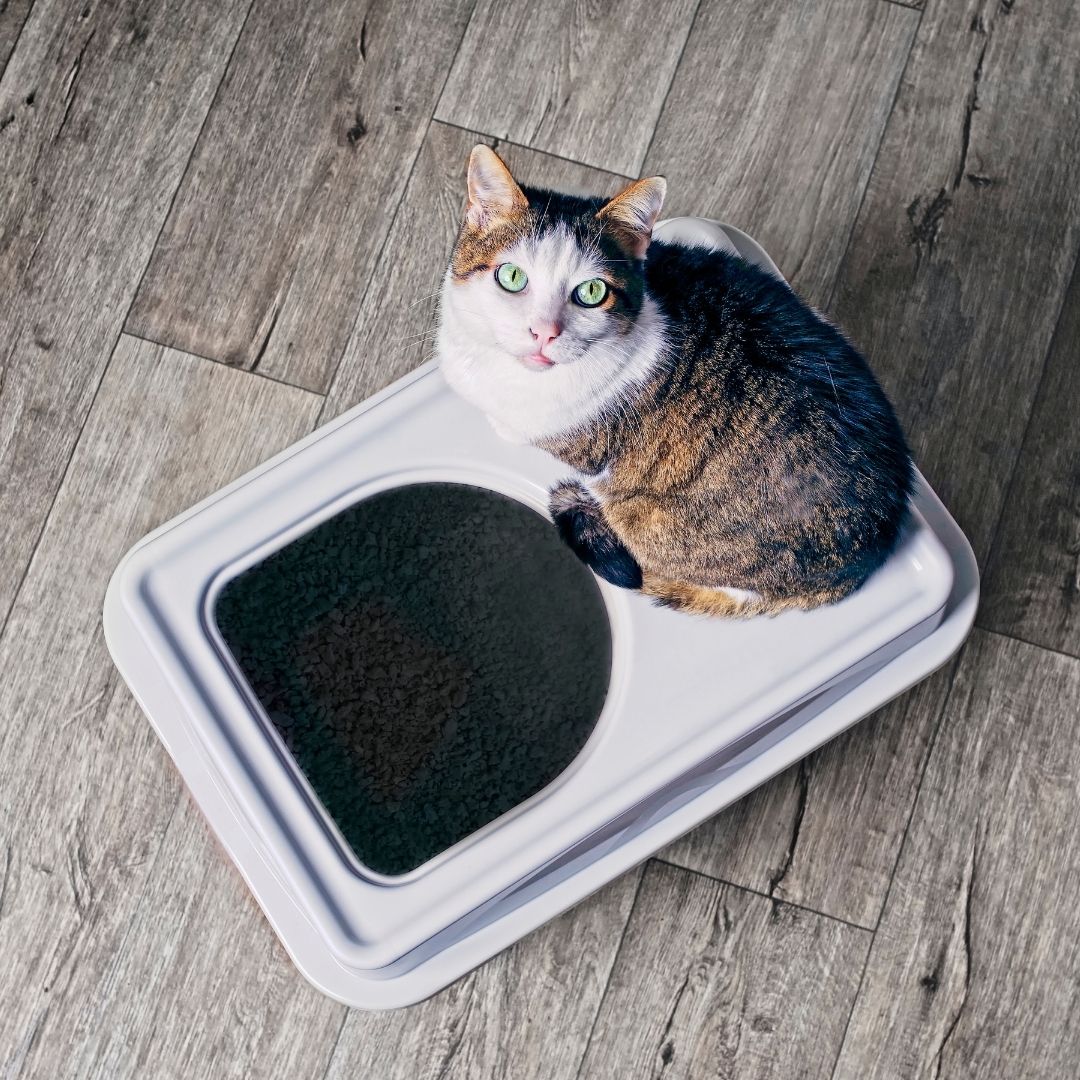

- Cats can be finicky about their litter, so if your cat doesn’t like any covering, a box with higher walls will be comfortable for your cat while decreasing the litter spillage.
- Keep a large, textured mat at the litterbox entrance to trap any stray granules when your pet exits.
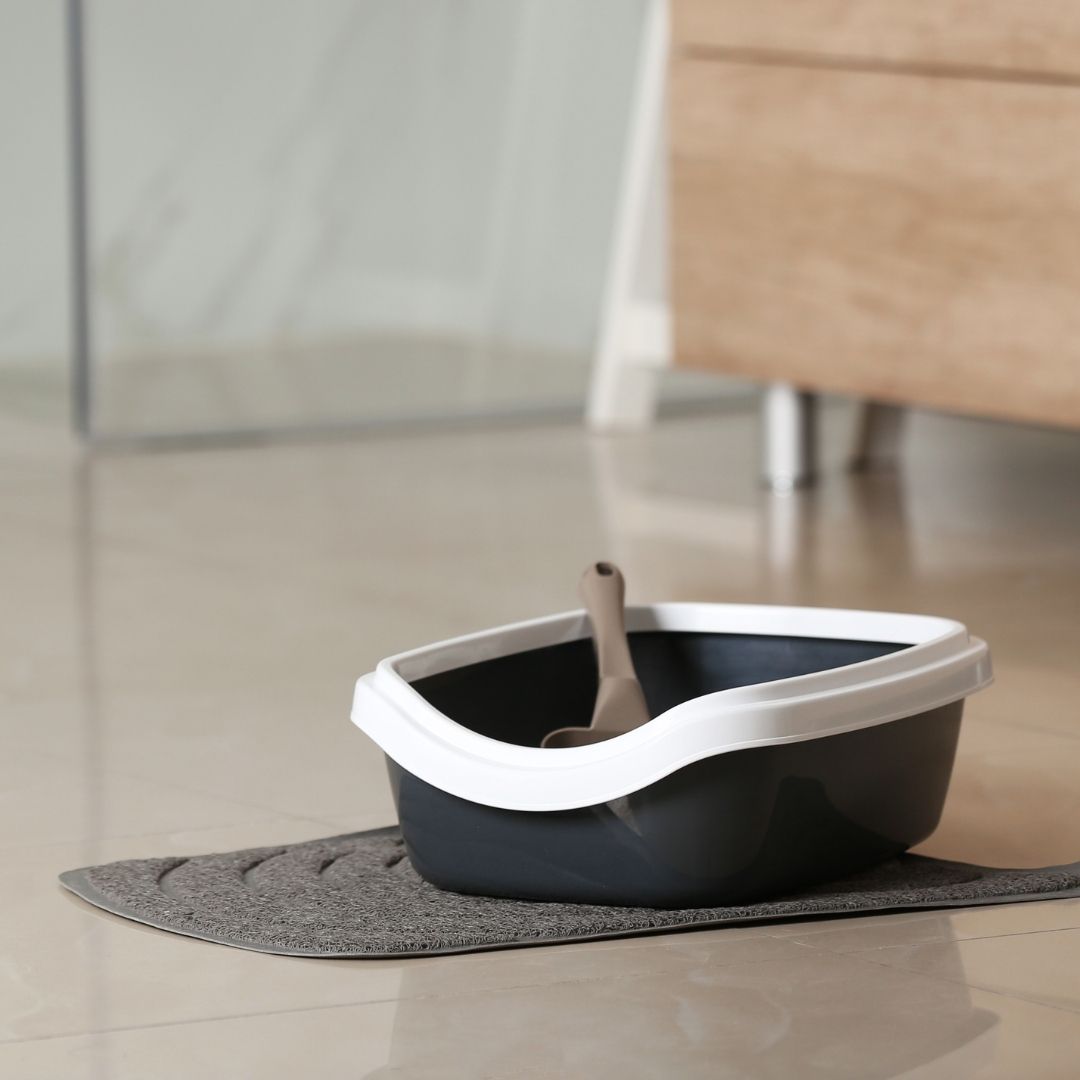

Kitty Litter Cleaning Schedule
- Scoop waste daily. Don’t shake out stray litter granules around clumps, as they may contribute to litter odor.
- Replace your cat’s litter about twice a week. Cats usually prefer a litter depth of no more than 2 inches. Washing the litterbox dish soap when you change the litter will help decrease odors and bacteria. Avoid any cleaner with ammonia or citrus scents.
- It’s a good idea to replace the litterbox once a year.
Freshen Pet Supplies


To wash your pet’s bedding and plush/rope toys, make sure you use a pet-safe detergent and follow the product’s label, when possible. It’s usually helpful to use fragrance-free detergent, since pets tend to be sensitive to scented products. To keep your pet’s toys in good condition longer, you may want to wash in a mesh delicates bag. Squeeze out excess water before sticking in the dryer or air drying.
To wash other toys, like rubber chews, as well as brushes, it’s a good idea to soak in a white vinegar solution with 1 part vinegar, 2 parts warm water, then scrub with dish soap and a toothbrush.
Toss and replace any toys that are tearing, fraying, crumbling, or very dirty/smelly, as these could be dangerous to your pet.
If your pet’s collar or harness needs some freshening, a helpful hack is to hand wash with warm water and pet shampoo, as the ingredients and fragrances in other soaps may irritate your pet’s skin.
Your Pet
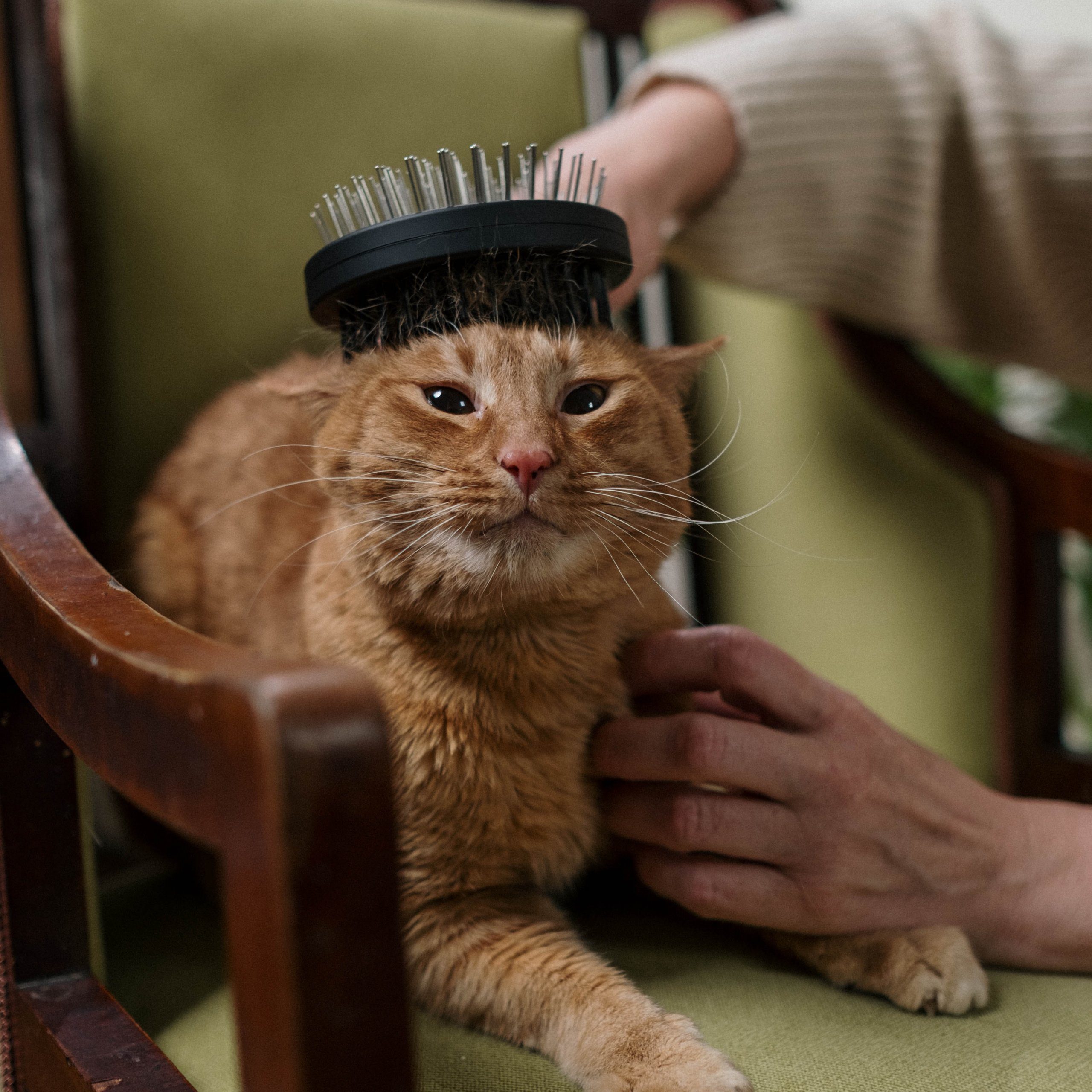

Now that we’ve covered your home, it’s time to make sure your pet is in ship shape too!
- Brush your pet daily to prevent painful tangles and reduce shedding.
- Trim long hair on your dog’s paw pads, so they don’t track as much dirt into the house.
- Dogs should have a bath every month, and cats should have one every 4-6 weeks. Dry shampoo made for pets or a simple quick wipe with a damp rag can also keep your pet fresh between baths. Here’s how to bathe your pet at home like a pro.
- Keep your pet comfy and save your flooring and furniture with regular nail trims. We recommend trimming every 2 weeks for dogs and every 2-4 weeks for cats. You can add a nail trim to your next visit at Essentials PetCare, but here’s how to trim nails at home between veterinary visits.
- Prevent flea infestations with regular flea prevention for all cats and dogs, even if they are indoor-only. Vacuum your home frequently to catch any fleas, eggs, and larvae that may shed from your pet’s coat.
Best Household Products for Pets
If you’re in the market to upgrade your home’s supplies, these are some of the best choices for pet households:
- Choose air filters made to filter pet hair.
- Garbage cans with a lid can keep nosy garbage hounds at bay.
- Upright canister vacuums are usually the most effective at sweeping up pet hair.
- Pet beds with removable, washable covers will make regular washing much easier.
- Look for pet-safe cleaners and follow all packaging instructions. Remember that natural doesn’t always mean pet-safe, either. Poisons are found in nature, right? We discussed common household toxins last month, so you can learn more here.
Essential Tip: Join our newsletter and VIP list, and follow us on Facebook, Twitter, and Instagram so you don’t miss any helpful pet content!



